
Antalya is known not only for its beaches, cable car, entertainment and ruins of ancient surrounding cities, but also for its historical center, an important part of which are gates, towers and the remains of former fortress walls, one of which can be climbed and admire panoramic views.
The fortress wall of Antalya with defensive bastions, towers and gates has been known since ancient times. It was originally built in 159 BC by order of King Attalus II. In the future, the walls were improved and, thus, they represent a joint work of the Hellenistic, Roman, Byzantine, Seljuk and Ottoman periods. The walls were external and internal, which separated the settlements.
Inside the walls of Antalya there was a city with houses, streets and other infrastructure. The walls and other fortifications were mostly destroyed and only small parts of them remain today, which are an important historical landmark of the city.
The very same old city of Antalya inside the walls is known as Kaleici (Kaleiçi), which means "Inside Kale" or "Inner Kale", where the word "Kale" itself means a castle or fortress. For this reason, the old town is also called the Antalya Fortress or Antalya Castle (Antalya Kalesi).
Inside the walls there are narrow streets, and there are about 3,000 houses with tiled roofs, most of which are now adapted for hotels, restaurants and shops. The characteristic designs of the houses not only give an idea of the architectural history of Antalya, but also best reflect the lifestyle, traditions and customs of the region. Today it is a popular tourist center of Antalya.
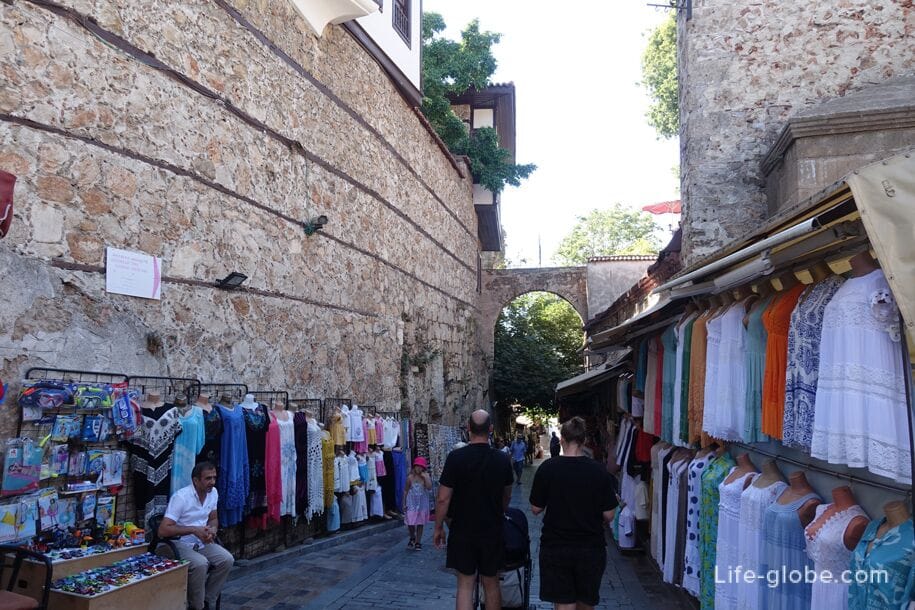
It is best to see and feel the full power of the fortress walls in the old port of Antalya (Kaleici Marina, Kaleiçi Yat Limanı), which is located under the walls.
Here the walls surround the port from the city side.
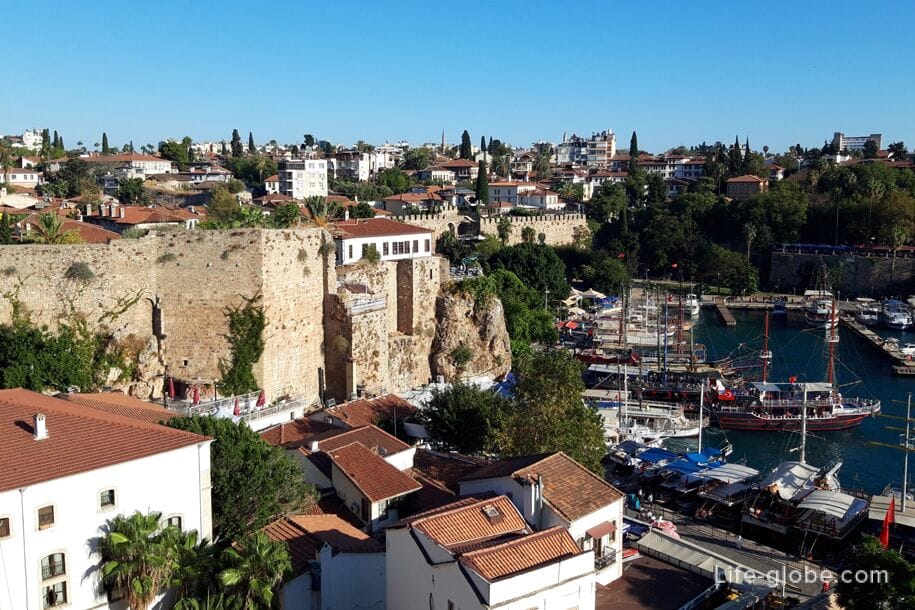

Powerful old stone steps lead to the port.

There are now restaurants and cafes on the walls of the port, which offer panoramic views of the port and the sea. More about the old port of Antalya…
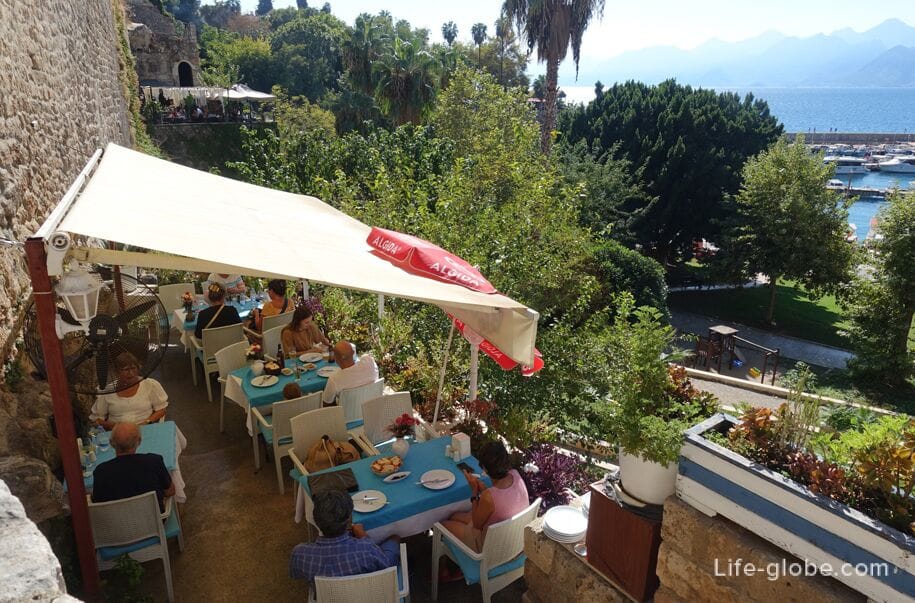

Part of the fortress wall near the old port can be climbed.
Passage to the ascent is possible through the restaurant-bar "Korykos Restaurant&Bar" on the street Mermerli Sk. Passage is free.
After passing through the restaurant, you get into the closed part of the wall with arched openings, then climb higher to the terrace of the bar and the battlemented wall, from which you can enjoy beautiful panoramic views of the wall itself, the old port, the Mediterranean Sea, the rocky coast, Konyaalti beach, mountains and parts of the old town.
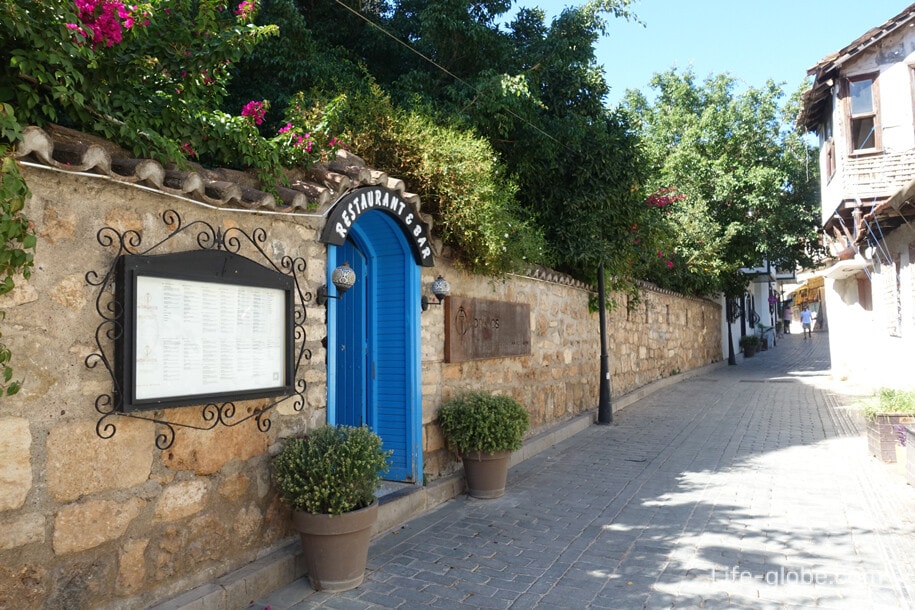
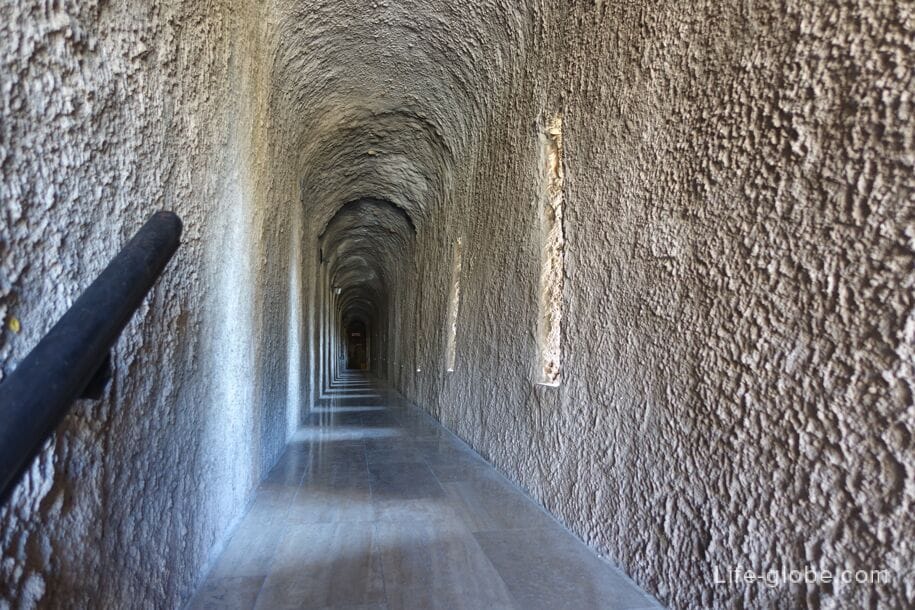
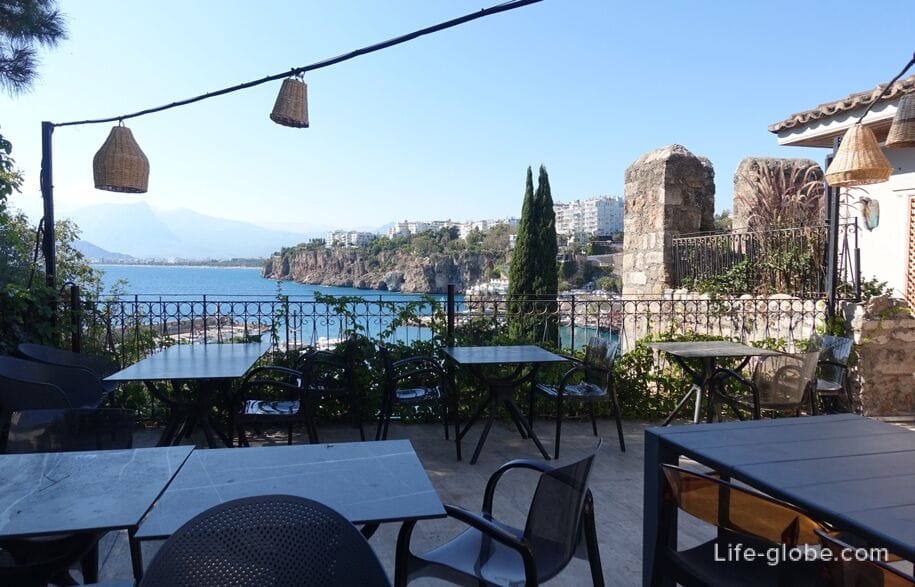

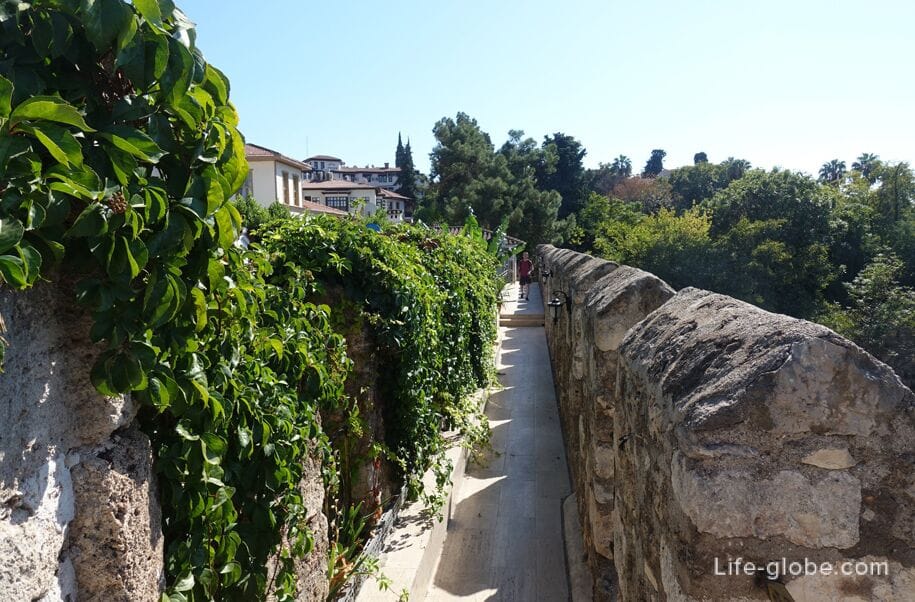
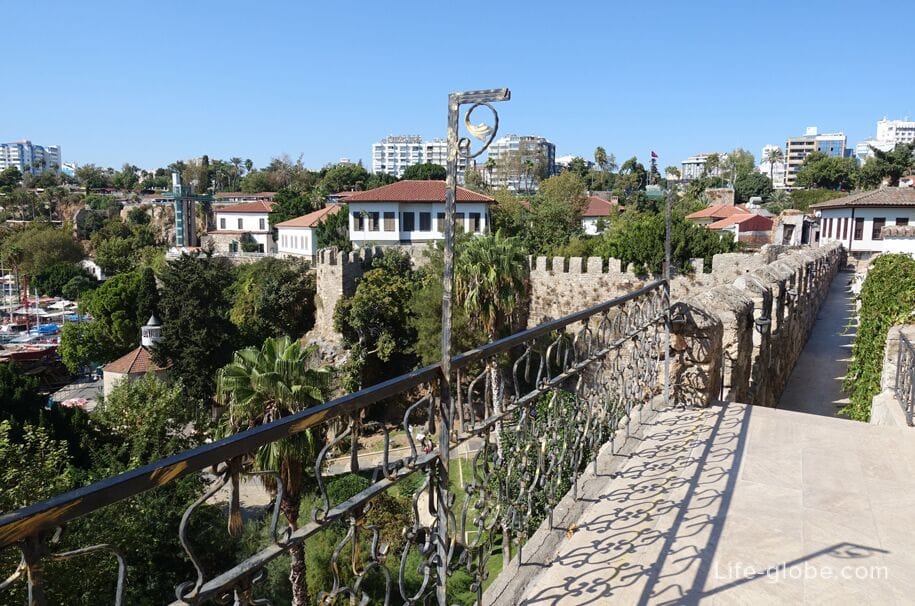
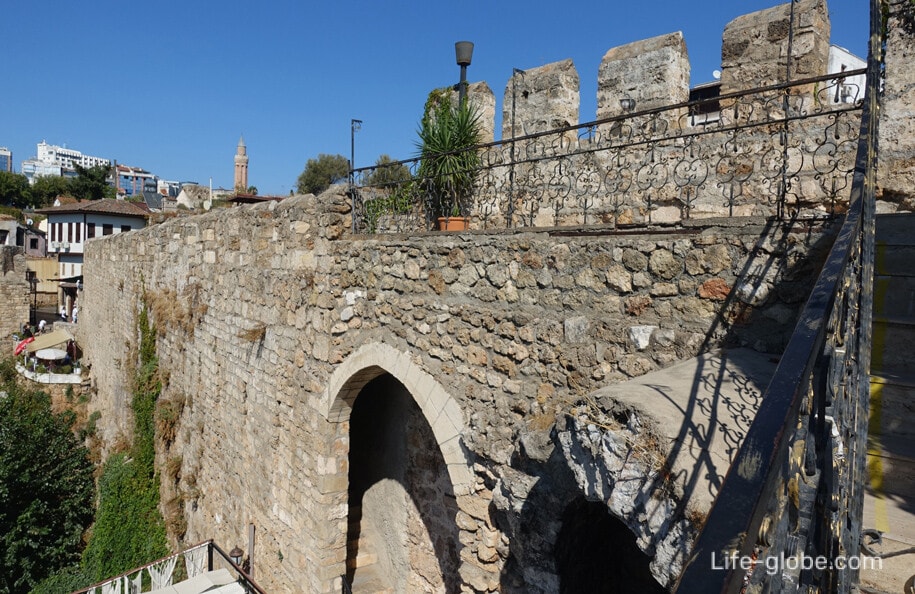
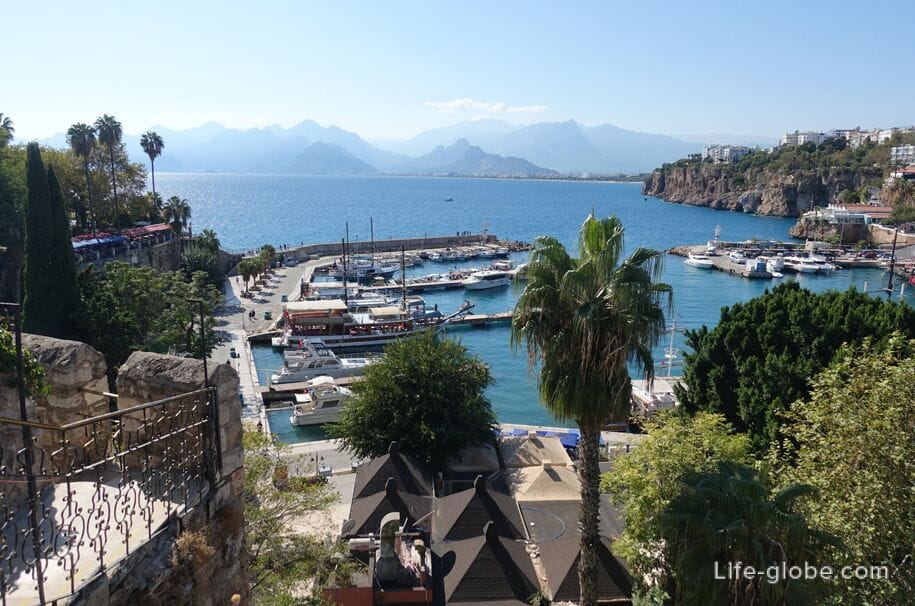
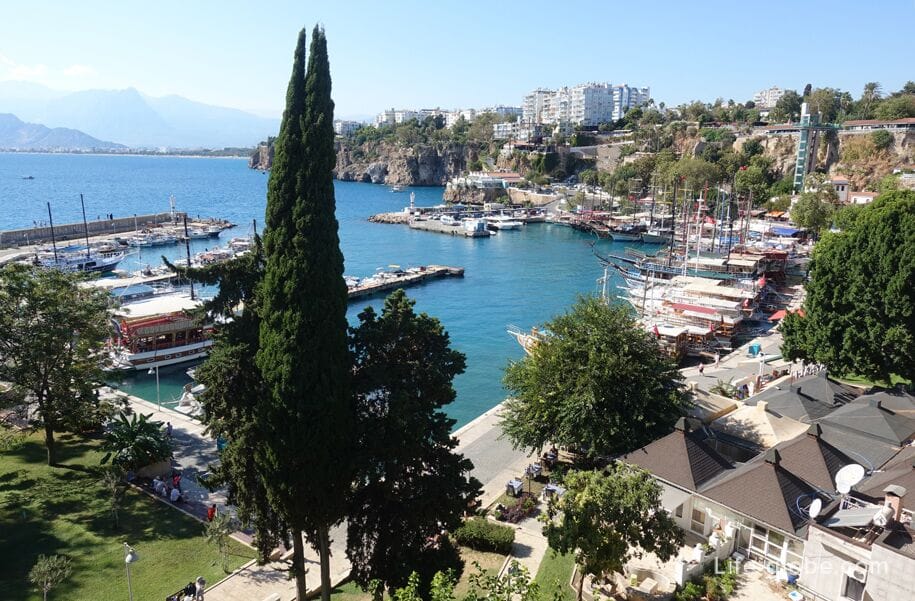
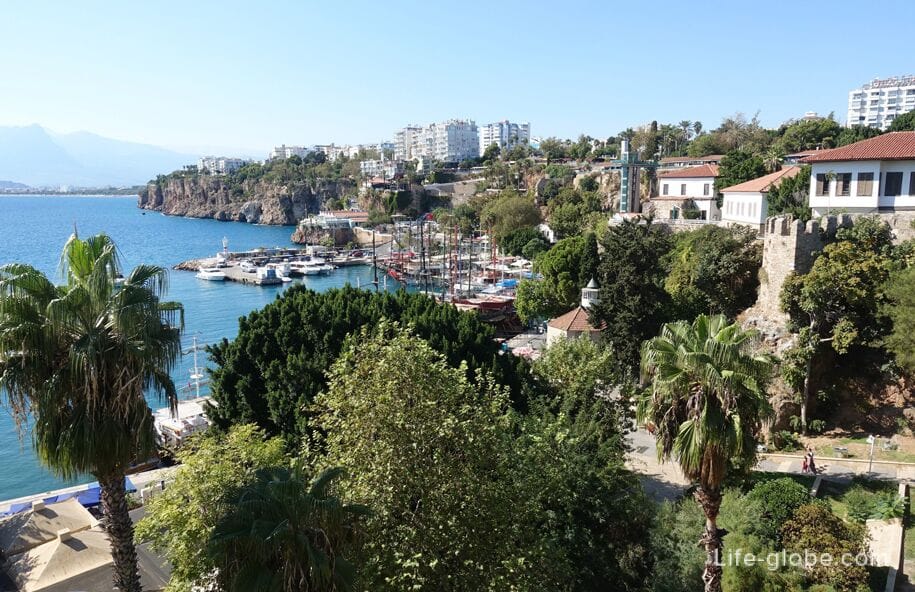

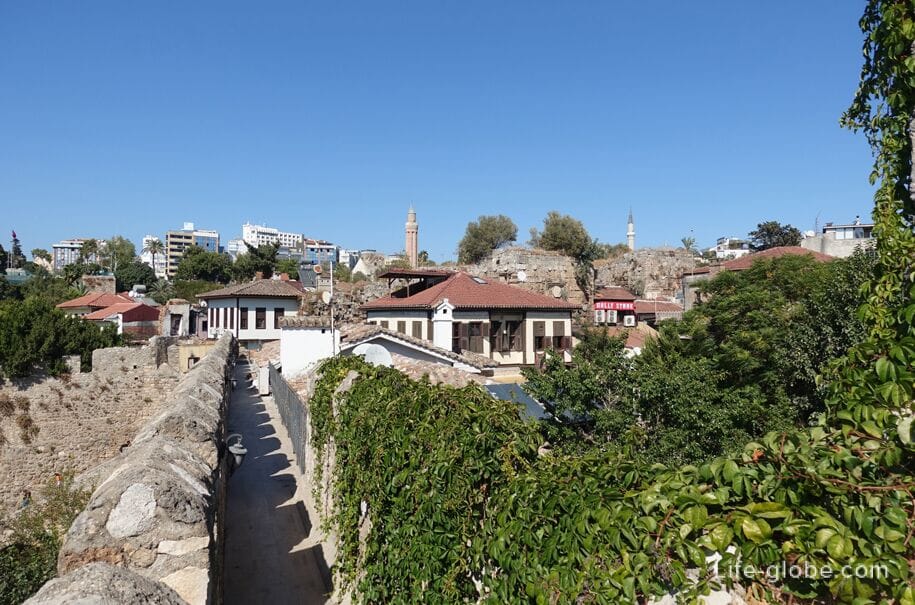
Video of the view from the Antalya wall
Near the old port, under the walls and rocks, there is a small paid beach of Mermerli (Mermerli Plajı) with a restaurant and spectacular views. More about the beach and the restaurant of Mermerli…
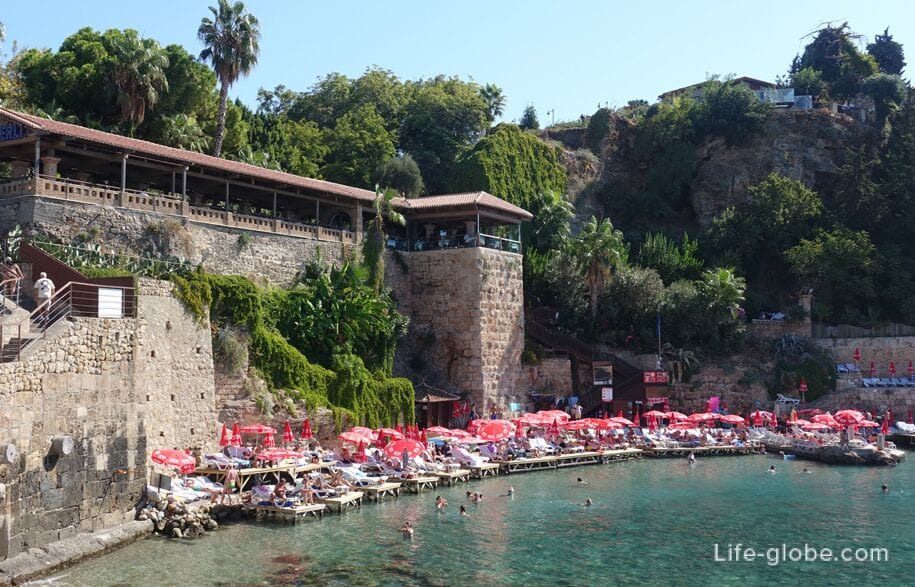
Another part of the fortress wall with towers is clearly visible from the land part of the city - near Hadrian's Gate or Uchkapılar (Hadrian's Gate, Üçkapılar), also known as the Triple Gate, Three Gates, or Three-Door Gate.
This is the ancient Roman gate of Antalya, which is one of the most famous and significant sights of the city.
The gate was erected and named after the Roman emperor Hadrian, who visited the city in 130.
Hadrian's Gate is the only preserved entrance gate in the walls that once surrounded the city and the harbor, which lead to the old town of Antalya. More about Hadrian's Gate, Towers and Wall…
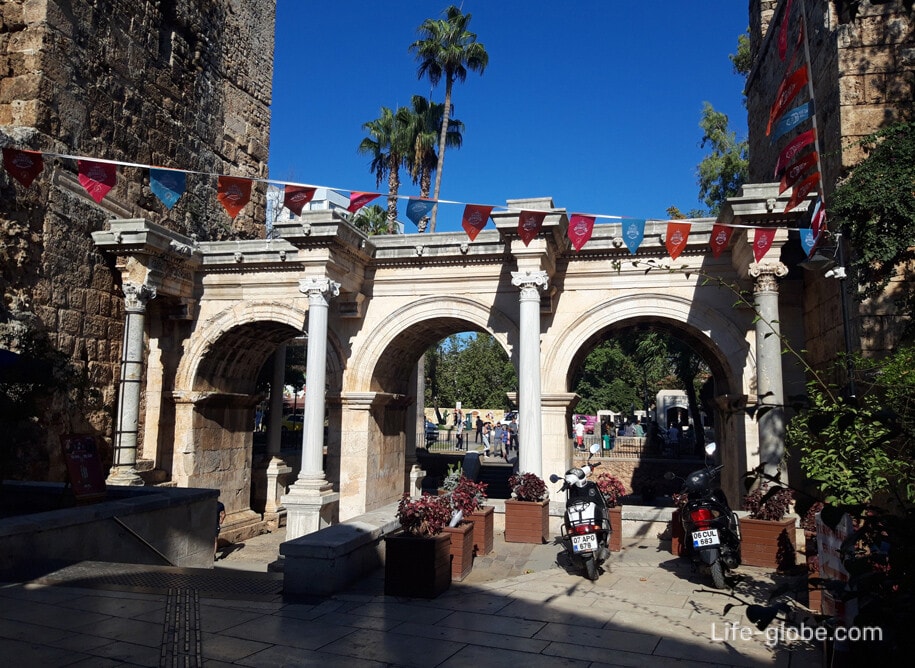
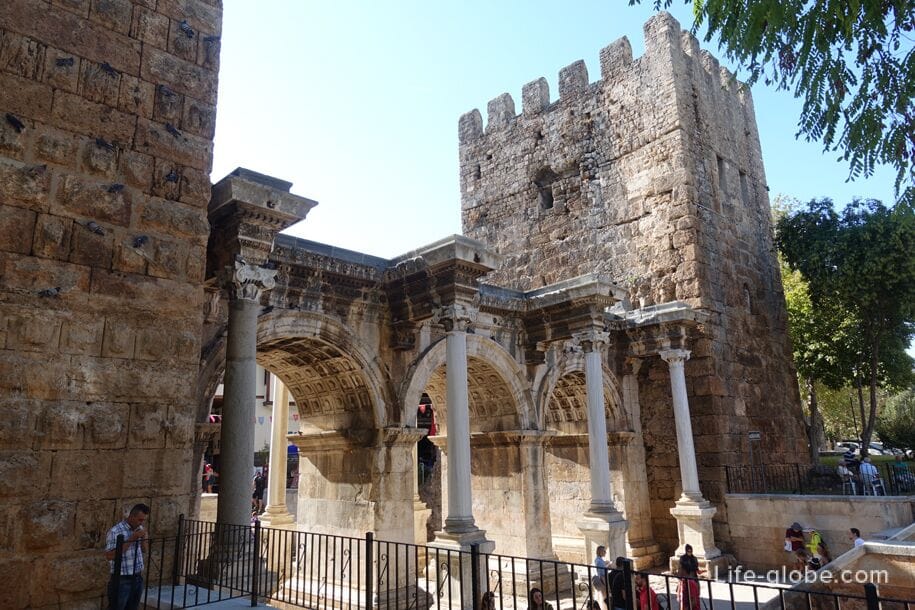
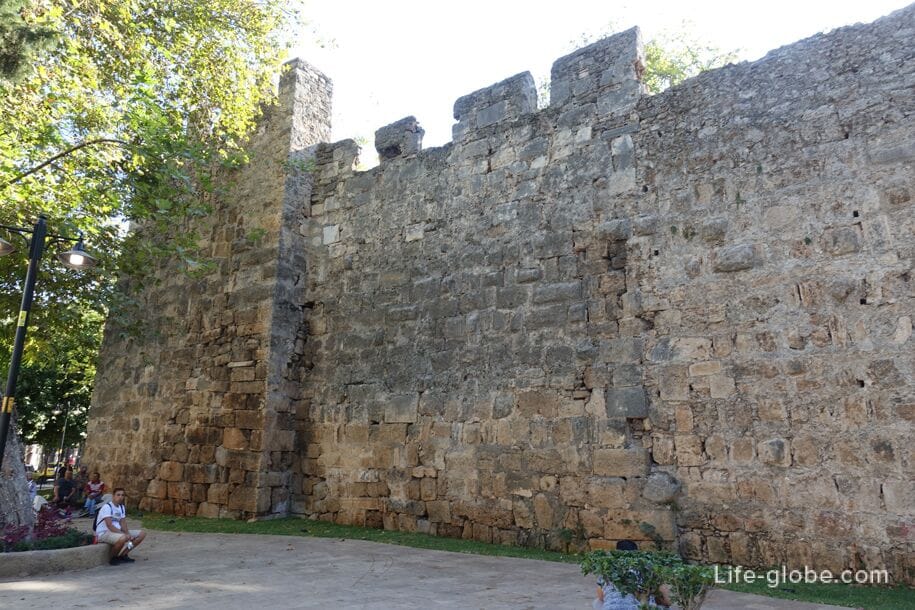
Another preserved part of the defensive structures is the Hidirlik Tower (Hıdırlık Kulesi).
The tower is located on a steep bank in the old town of Kaleici, next to the Karaalioglu Park.
It is believed that the tower was built by the ruling Roman Empire in the 2nd century AD and was used as a lighthouse or fortification, performing defensive functions. Due to the fact that there is a large stone block inside the tower, some historians believe that the tower could have been a tomb.
The structure is made of yellow-brown stone. It has a quadrangular base and a massive round top.
Near the Hidirlik Tower there is a small archaeological excavation area with cannons, an observation deck and restaurants. More about the Hidirlik Tower…

Not far from the old port, at the northern edge of the Kaleichi district, on Imaret Sk. street, you can see the Antalya Clock Tower (Antalya Saat Kulesi).
Most likely, the tower was built in 1901 by Grand Vizier Kuchuk Said Pasha II by decree of Sultan Abdulhamit II.
This tower was previously also part of the outer fortress wall. When the fortress walls were destroyed, the tower remained as a detached landmark, a historical monument and a symbol of the city.
The tower has a pentagonal base (formerly part of the bastion) with a smaller square plan with a crenellated top. When the tower was first built, it had a dome in the shape of a bow head.
The clock is placed on all four sides of the tower body. In 1974, the clock on the tower was replaced by an electronic one.
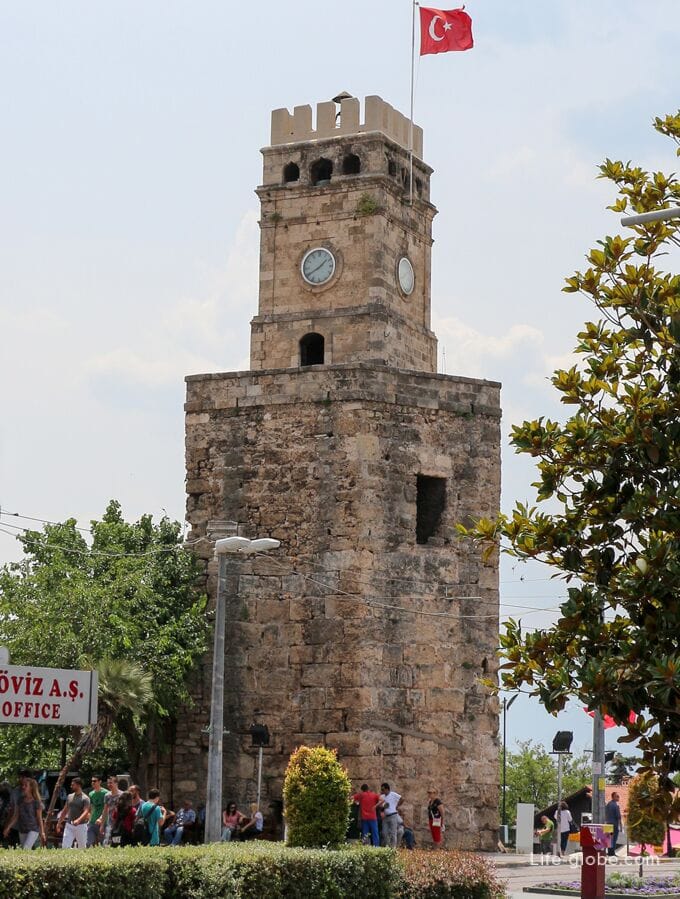
Near the Clock Tower, on the boulevard Cumhuriyet Cd., there are two more towers that have survived to this day in a rebuilt form.
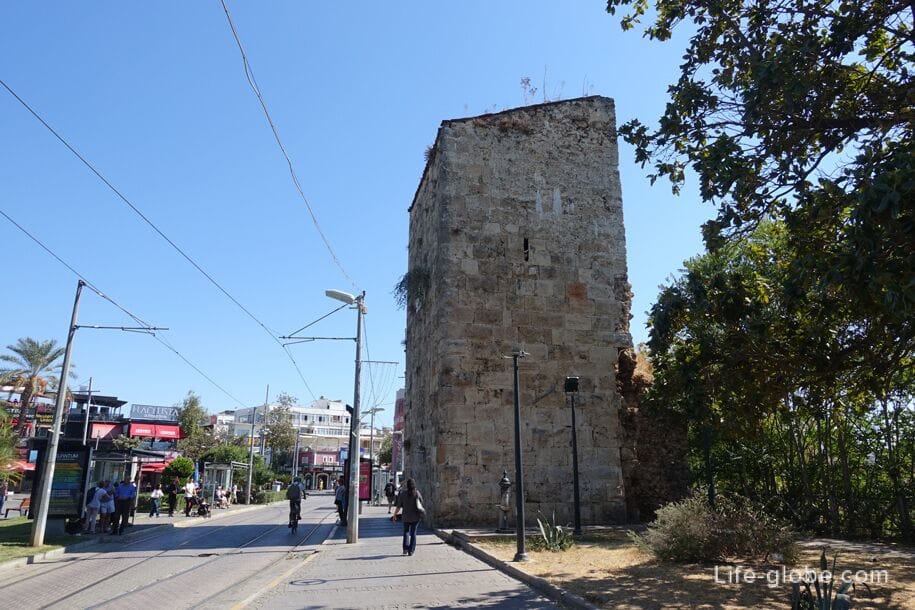
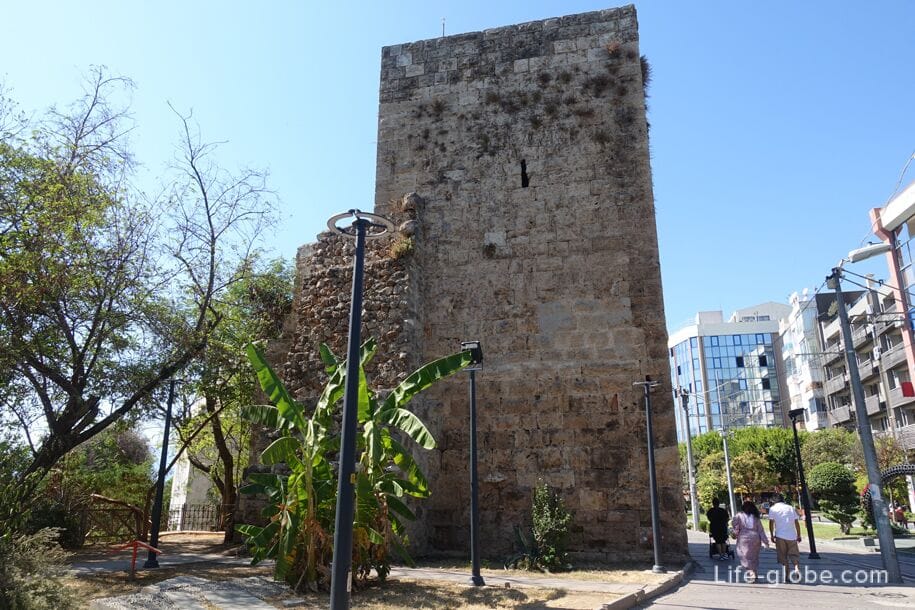
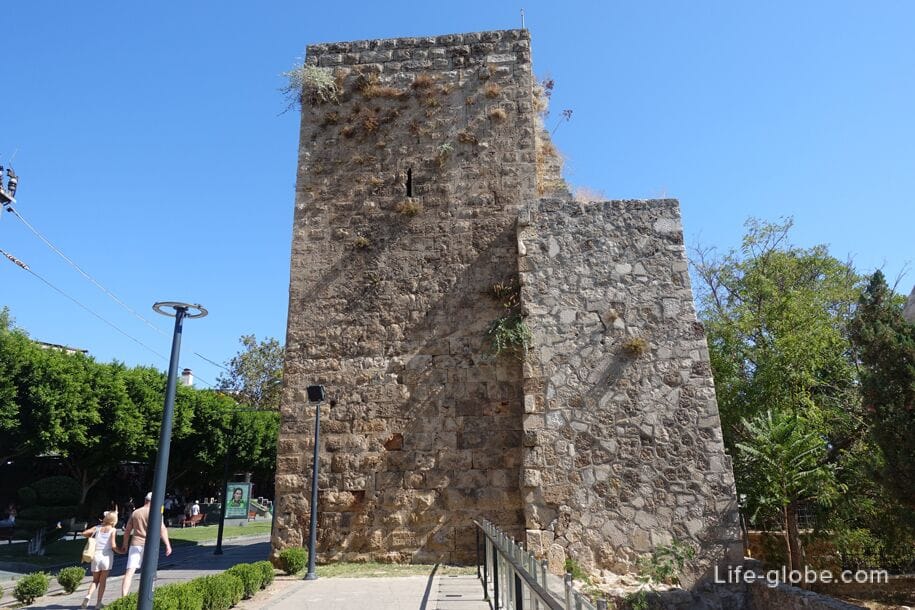
Inside the old town, you can also see some remnants of walls and towers.
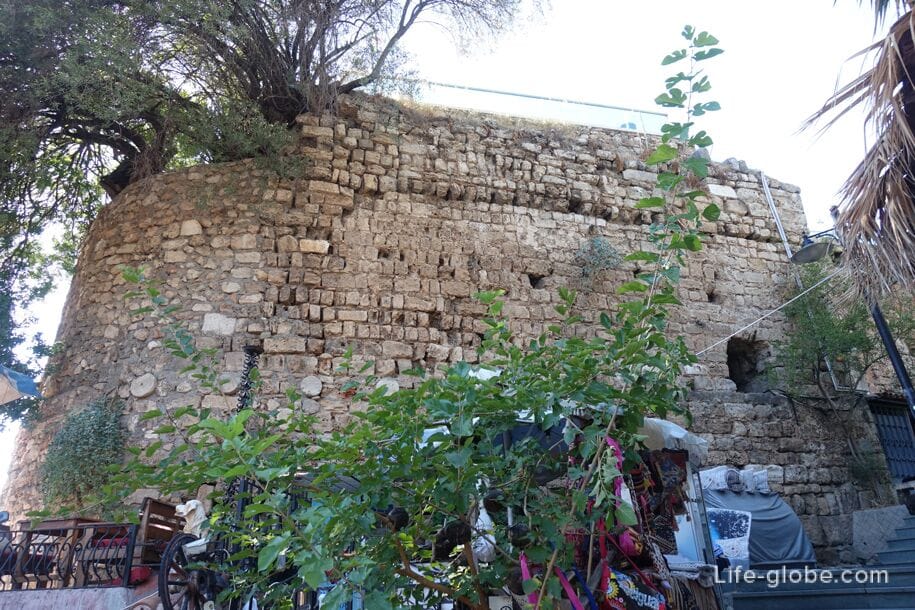
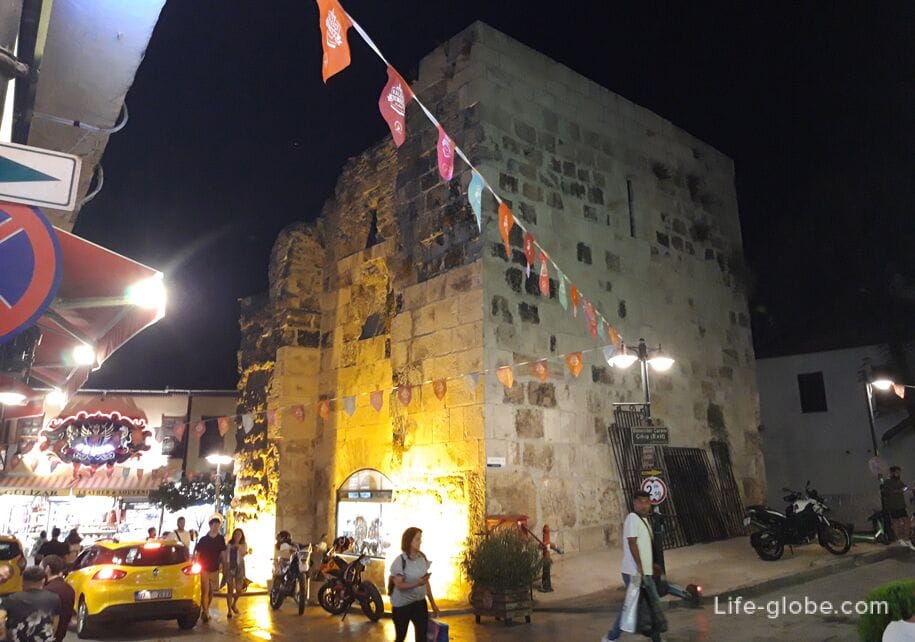
All accommodation facilities in Antalya (hotels, apartments, villas, guest houses, etc.), including in the old town, near beaches and more remotely from those, can be view and book here